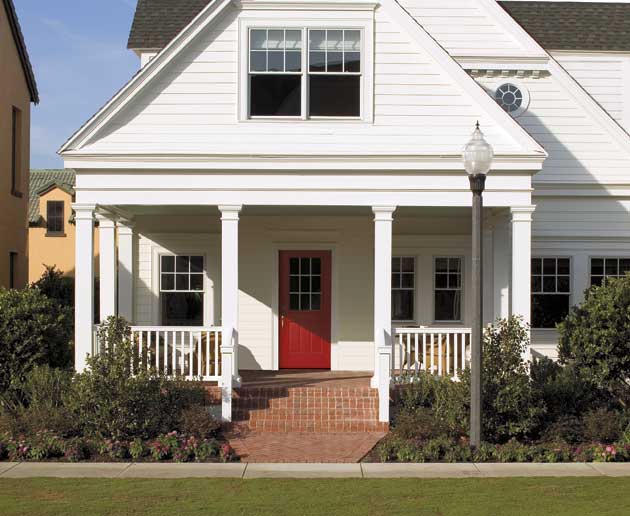
Window and door styles vary. Make sure you are aware of the terminology when you are shopping, so you can find exactly what you are looking for.
Pella has provided this handy guide for choosing window and door styles that will complement your home’s architecture and give you the performance you need.

Remember to choose a window or door that will look good from the inside as well as the outside of your home.
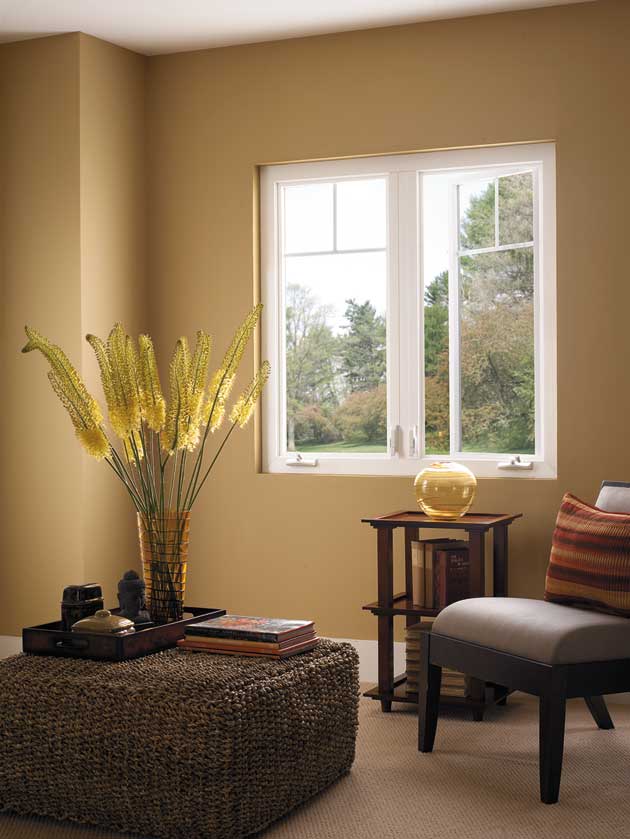
Window Styles
- Awning — This type of window, hinged from the top, opening outward from the bottom. In general, awning windows have less air leakage, because the sash closes by pressing against the frame. Because of this design, awning windows help shed water away from the window opening. Awning windows are typically installed over fixed windows or doors (as transoms), or in garages above eye level to provide ventilation while maintaining privacy. They are a good choice for windows that are wider than they are tall.
- Bay and bow — A typical bay window consists of a large center window bordered on either side by double-hung or casement windows set at 30- or 45-degree angles. Or, all the windows can be stationary (fixed), operating (venting), or any combination of those. The bow window, similar to a bay window, consists of four or more equal-size windows, usually casements, that create a gradual arcing projection. Both bay and bow windows provide great open views, as well as give a room the illusion of being larger than it really is. Adding a window seat is a popular addition to any bay or bow window.
- Casement — A popular style featured in a wide variety of home designs, casement windows feature a single sash that’s hinged on the left or right and open outward using a crank handle. That’s why they’re sometimes referred to as “crank out” windows. Casement windows offer exceptional ventilation than double-hung windows, typically have less air leakage than other window styles, and look best if they are at least slightly taller than they are wide. Because they swing out, however, they may not be well suited to installation adjacent to outdoor living areas, such as decks or front porches.
- Double-hung — Double-hung windows feature two sashes in a single frame. The top and bottom sashes bypass each other vertically when sliding open from the bottom up or the top down. Double-hung windows look best when they are about twice as tall as they are wide and the each sash is an equal-sized square. They are often installed in homes with traditional architecture like Victorians or Colonials.
- Single-hung — Single-hung windows offer all similar features and benefits of double hung windows, with one difference: only the bottom sash opens by sliding upward. The ventilation opening can be adjusted from a small area to one-half of the window area.
- Sliding — Sliding windows, sometimes called gliders or sliders, function just as their name implies — moving horizontally side to side. Sliders offer a sleek, contemporary profile and are ideal for installing in those hard-to-reach areas, like over the kitchen sink. They also are commonly installed in multi-family buildings and apartment complexes. Sliders are typically available as single-sliding (only one sash moves) or double-sliding units.
- Fixed — Fixed windows fixed windows don’t open or vent. They’re often selected as accents or in combination with other venting windows. A circular or hexagonal window can be strategically placed to enhance a view or to add interest to the exterior architecture of your home. Or, in a window wall, a fixed window can be flanked by venting units and topped with smaller fixed units, called transoms.
- Transom — Like fixed windows, transoms are most often used in combination with other windows, and can be either venting or fixed units. They typically are installed underneath the primary window units, or on top of a room’s primary windows. They help give a room the illusion of larger windows, allow in more light and, if they vent, may increase airflow. Transoms often are used to create a window wall. Transom windows are available in many different shapes, including square, rectangular, half-circle, and elliptical.
- Window wall — Also often referred to as combination windows, window walls help make a small room look larger maximizing the amount of light and ventilation. Their design can incorporate any combination of sizes, shapes and styles, sometimes stretching from floor to ceiling and wall to wall.

Entry Door Styles
Entry door glass options
- Each decorative glass collection features a unique combination of glass style, texture and caming (the decorative metal used to assemble glass pieces into a design).
- A variety of decorative glass options let the sun shine through and add style and elegance to any home style.
- Exclusive decorative glass designs are sandwiched inside a sealed insulating glass unit to deliver elegance, and energy efficiency.
- Textured glass permits light to pass through, yet also provides privacy.
- Pella offers a wide selection of entry doors, sidelights and transoms made with clear insulating glass or Low-E insulating glass with argon.
Grill styles
- For a classic style, choose from a variety of permanent or removable grille options and standard grille patterns for the traditional look of divided light. Custom patterns are also available.
Caming style
- From light to dark — from black to copper to satin nickel options — Pella offers a variety of caming materials to add decorative detail to doors.
Transom
- A transom is a fixed window above an entry door that adds extra light and view. Transoms are available with decorative glass or grilles to match Pella® entry doors.
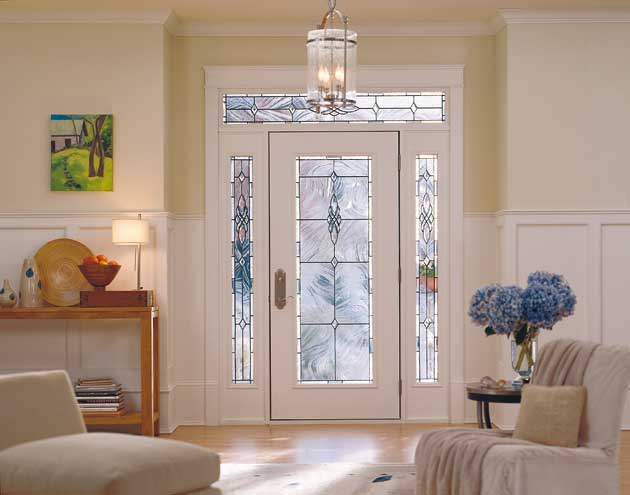
Sidelight
- A sidelight is a fixed window placed next to an entry door for extra light and views. Matching sidelights with decorative glass or grilles are available for Pella entry doors.
Clavos/hinge straps
- Authentic decorative hardware options, like clavos or hinge straps, allow you to create an Old-World style entry door.
Speakeasy
- A small “door within a door” adds historical charm and style, while allowing you to identify visitors before opening the door. Available with or without grilles on Pella Architect Series entry doors.
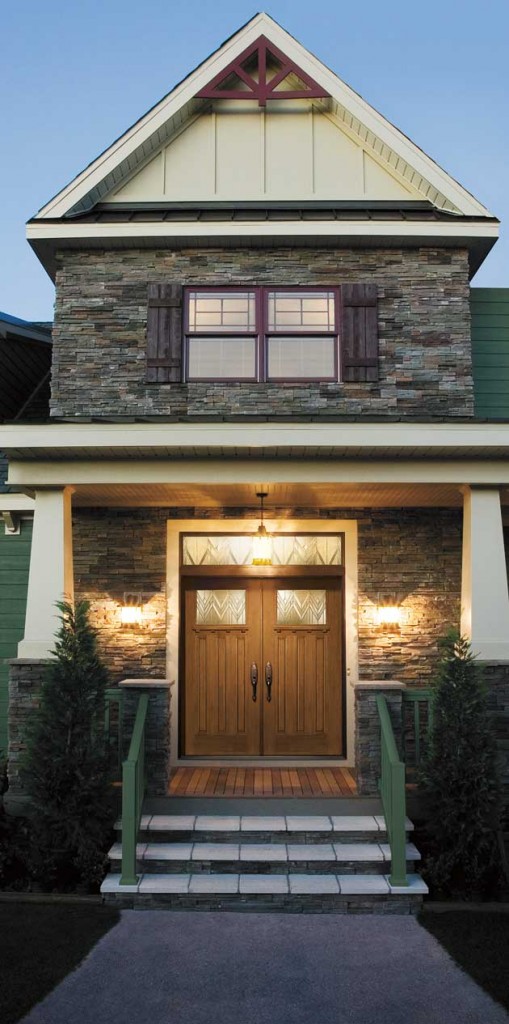
Photos courtesy of Pella Windows and Doors.

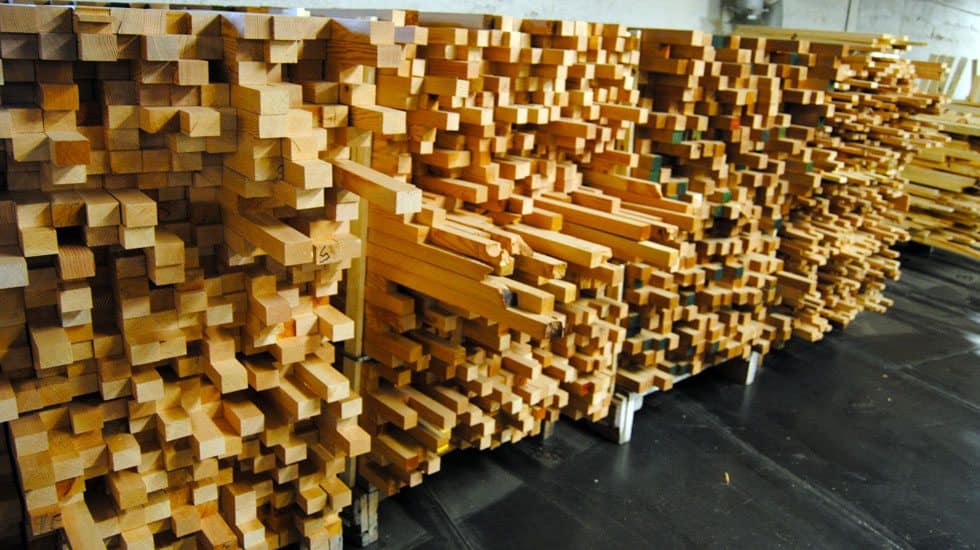
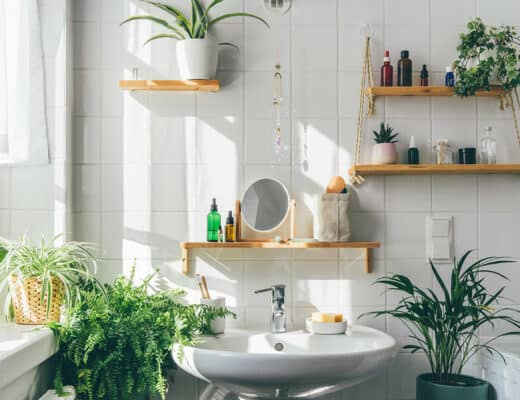
No Comments